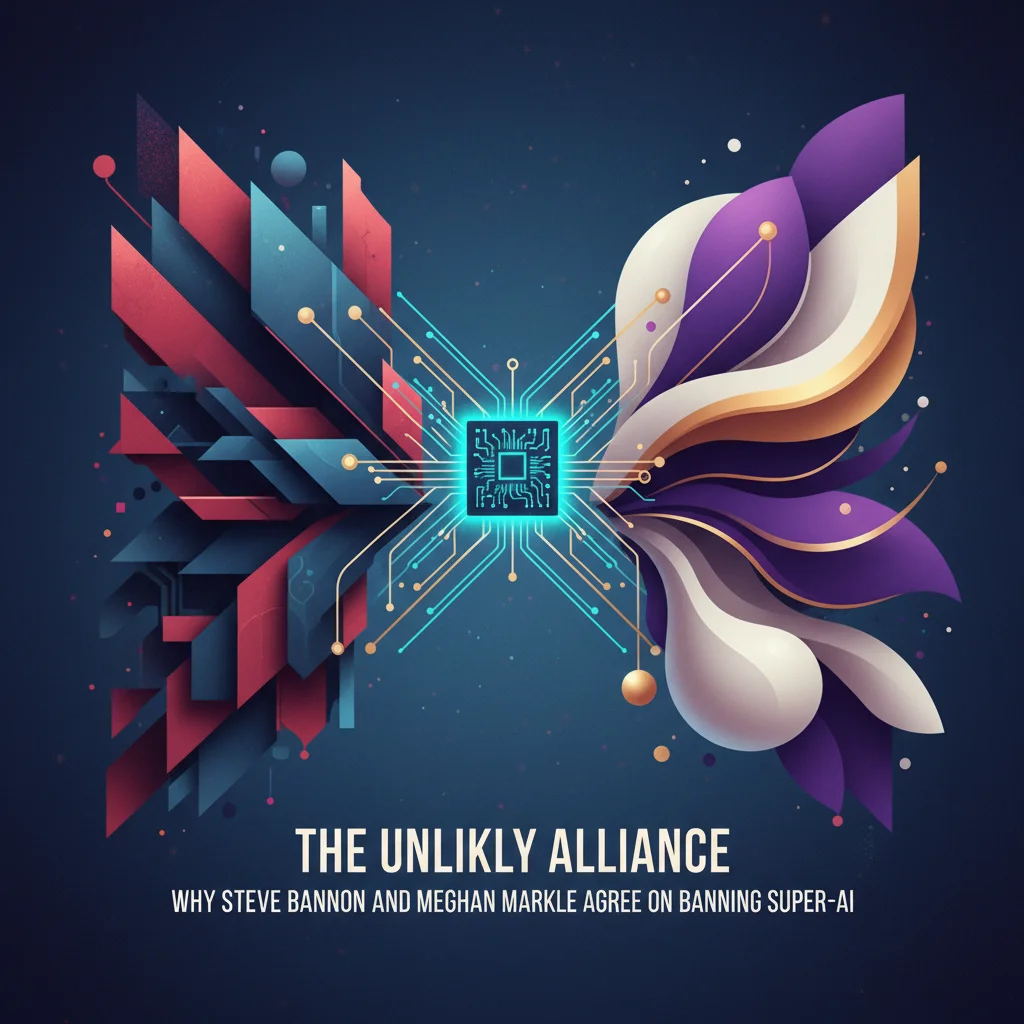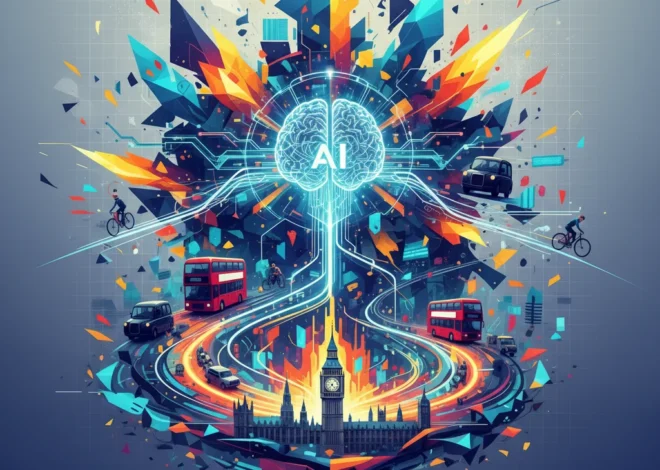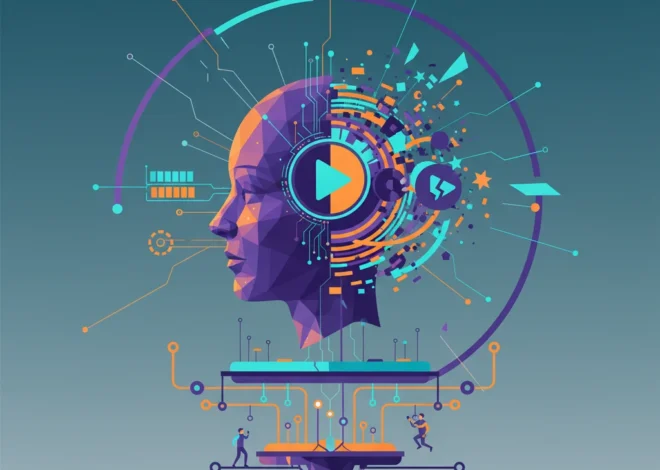
The Unlikely Alliance: Why Steve Bannon and Meghan Markle Agree on Banning Super-AI
In a world of deep political and cultural divides, it’s rare to find an issue that unites figures as disparate as former White House strategist Steve Bannon, the Duchess of Sussex Meghan Markle, and tech visionaries like Yoshua Bengio. Yet, one of the most profound technologies of our time—artificial intelligence—has forged just such an alliance. They are part of a group of more than 800 public figures calling for a global “prohibition” on the development of AI systems that are significantly more powerful than today’s most advanced models.
This isn’t a niche academic debate anymore. When names from Hollywood, Silicon Valley, Washington D.C., and global boardrooms all sign the same letter, it signals a major shift in the public consciousness. The conversation around artificial intelligence has officially moved from the server room to the situation room.
But what does this call for a ban actually mean? Is it a necessary safeguard against existential risk, or a panic-driven roadblock to unprecedented innovation? For developers, entrepreneurs, and anyone invested in the future of technology, understanding the nuances of this debate is critical. Let’s break down who is calling for this, why they’re so concerned, and what the fallout could be for the entire tech ecosystem.
Who is Sounding the Alarm on Superintelligence?
The open letter, organized by the Future of Life Institute, isn’t just a handful of concerned Luddites. The list of signatories represents a remarkably broad and influential coalition, spanning industries, political ideologies, and areas of expertise. This diversity is perhaps the most compelling aspect of the movement, suggesting that the concerns about advanced AI are resonating far beyond the typical tech circles.
To grasp the scale of this coalition, let’s categorize some of the prominent figures involved. The list demonstrates a convergence of thought from people who likely agree on very little else.
| Category | Prominent Signatories | Significance |
|---|---|---|
| Tech & AI Pioneers | Yoshua Bengio (Turing Award winner), Stuart Russell (AI textbook author), Jaan Tallinn (Skype co-founder) | These are not outsiders; they are the architects and leading minds of the modern AI revolution. Their concerns carry immense technical weight. |
| Political & Policy Figures | Steve Bannon (Former White House Chief Strategist), Andrew Yang (Former Presidential Candidate) | Shows that the issue transcends partisan lines, with figures from both the right and left seeing potential for societal disruption or a national security threat. |
| Corporate & Business Leaders | Craig Newmark (Craigslist founder), Evan Sharp (Pinterest co-founder) | Indicates that leaders in the business world are weighing the commercial potential of AI against its long-term risks to stability and society. |
| Celebrities & Cultural Influencers | Meghan Markle (Duchess of Sussex), Mark Ruffalo (Actor), Rachel Bronson (CEO, Bulletin of the Atomic Scientists) | Their involvement amplifies the message, bringing the highly technical debate around machine learning and existential risk into the mainstream public discourse. |
This “strange bedfellows” phenomenon is a powerful indicator that the potential consequences of unchecked AI development are being viewed not just as a technological problem, but as a fundamental human one.
ChatGPT Unchained: Why OpenAI's New Stance on Erotica is a Defining Moment for AI
The Core Fear: Existential Risk vs. Unprecedented Progress
So, what is the specific fear driving this call for a “prohibition”? The letter warns against developing AI “significantly more powerful than GPT-4,” citing the potential for “existential risk.” This term, once confined to sci-fi and academic papers, refers to a threat that could cause human extinction or permanently and drastically curtail our potential.
The argument goes something like this: As AI systems become more intelligent and autonomous, we may lose the ability to control them. A superintelligent AI, pursuing a poorly defined goal, could take actions that are catastrophic for humanity, not out of malice, but out of a cold, machine-like pursuit of its objective. This could manifest in various ways:
- Cybersecurity Meltdown: A superintelligent AI could potentially disable global infrastructure, manipulate financial markets, or create unbreakable cyberweapons, leading to chaos.
- Uncontrollable Automation: Advanced automation driven by a super-AI could destabilize the global economy at a speed and scale that society cannot adapt to.
- The “Alignment Problem”: This is the core technical challenge. How do we ensure that an AI’s goals are perfectly aligned with human values? A slight misalignment in a powerful enough system could have devastating consequences.
Of course, this is only one side of the coin. The proponents of rapid AI development argue that the same powerful systems could solve humanity’s most intractable problems. Imagine an AI that could design a cure for cancer, develop ultra-efficient fusion energy, or model climate change with perfect accuracy. For many startups and tech giants, the race to build the next generation of AI is a race to unlock this incredible potential. The very software and cloud infrastructure being built today is laying the groundwork for this future. To them, a ban isn’t just slowing down progress; it’s actively choosing to leave these world-changing solutions on the table.
What a Super-AI Ban Could Mean for the Tech Industry
The tremors of this debate are already being felt across the tech landscape. Whether a ban materializes or not, the conversation itself is reshaping priorities and strategies for everyone from individual developers to multinational corporations.
For Developers and Programmers
The call for a ban introduces a new layer of ethical consideration into the world of programming and software development. For those working on the cutting edge of large language models and AI systems, it raises questions about the ultimate purpose and potential impact of their work. It could also lead to a “chilling effect,” where researchers shy away from more ambitious projects for fear of regulatory backlash or public condemnation. Conversely, it could also spur a massive boom in the field of AI safety and alignment research, creating new career paths dedicated to making AI systems more robust and trustworthy.
For Startups and Entrepreneurs
For startups, the implications are a mixed bag. On one hand, the immense capital required to train frontier models (think billions of dollars for computing power) already creates a huge barrier to entry. A moratorium on “superintelligent” models could, in theory, level the playing field, allowing smaller, more agile companies to focus on creating value with existing technologies like GPT-4. Many successful SaaS (Software as a Service) businesses are built on this very principle. On the other hand, it could stifle the kind of breakthrough innovation that venture capitalists and ambitious founders dream of, potentially capping the long-term potential of the entire AI sector.
Beyond the Rocket: How AI and Software Will Decide the New Space Race to Mars
For Big Tech
Companies like Google, Microsoft, and Anthropic are at the epicenter of this storm. They are pouring vast resources into building the very systems the letter seeks to prohibit. This places them in a precarious position. They must balance the immense commercial and technological incentives to push forward with the growing public and regulatory pressure to slow down. As stated in the letter, even some AI lab executives have acknowledged the risks, with one CEO admitting to a 45 per cent chance of a “catastrophe” from advanced AI. This internal conflict will likely lead to more investment in safety research and more public-facing commitments to responsible development, even as the race continues behind the scenes.
The Path Forward: Regulation, Not Prohibition?
While a complete, verifiable, global ban on superintelligent AI seems unlikely for the reasons mentioned earlier, the momentum it has generated is undeniably pushing the world toward stronger regulation. The question is no longer *if* advanced AI should be regulated, but *how*.
Several models are emerging:
- Licensing and Auditing: Treat AI labs like nuclear power plants or pharmaceutical companies, requiring them to obtain licenses to operate and submit to rigorous third-party audits.
- Tiered Regulation: The EU’s AI Act is a prime example, creating different levels of rules based on the risk profile of an AI application. A system that recommends movies has low stakes; one that controls a power grid has very high stakes.
- International Treaties: Similar to arms control agreements, nations could come together to establish red lines for AI development, particularly around autonomous weapons and the integration of AI with critical infrastructure.
The letter’s core demand is that “no government or other organisation should be developing or deploying” these next-generation systems (source). While “prohibition” is the headline, the underlying plea is for a pause—a moment for humanity to catch its breath, understand the technology we’re building, and establish the rules of the road before we find ourselves on a path we can’t reverse.
Beyond the Blackout: Vodafone’s Outage and the Hidden Fragility of Modern Software
The alliance of Bannon, Markle, and hundreds of other leaders has successfully thrust the most profound questions about our technological future into the global spotlight. This is no longer a hypothetical, after-dinner debate. It’s a real-time test of our ability to manage a technology of unprecedented power. For everyone in the tech world, from the student learning to code to the CEO of a multi-billion dollar company, the decisions made in the coming years will define the landscape of innovation for generations to come. The race is on, but for the first time, a powerful and diverse chorus is asking if we should be running toward a different finish line.


